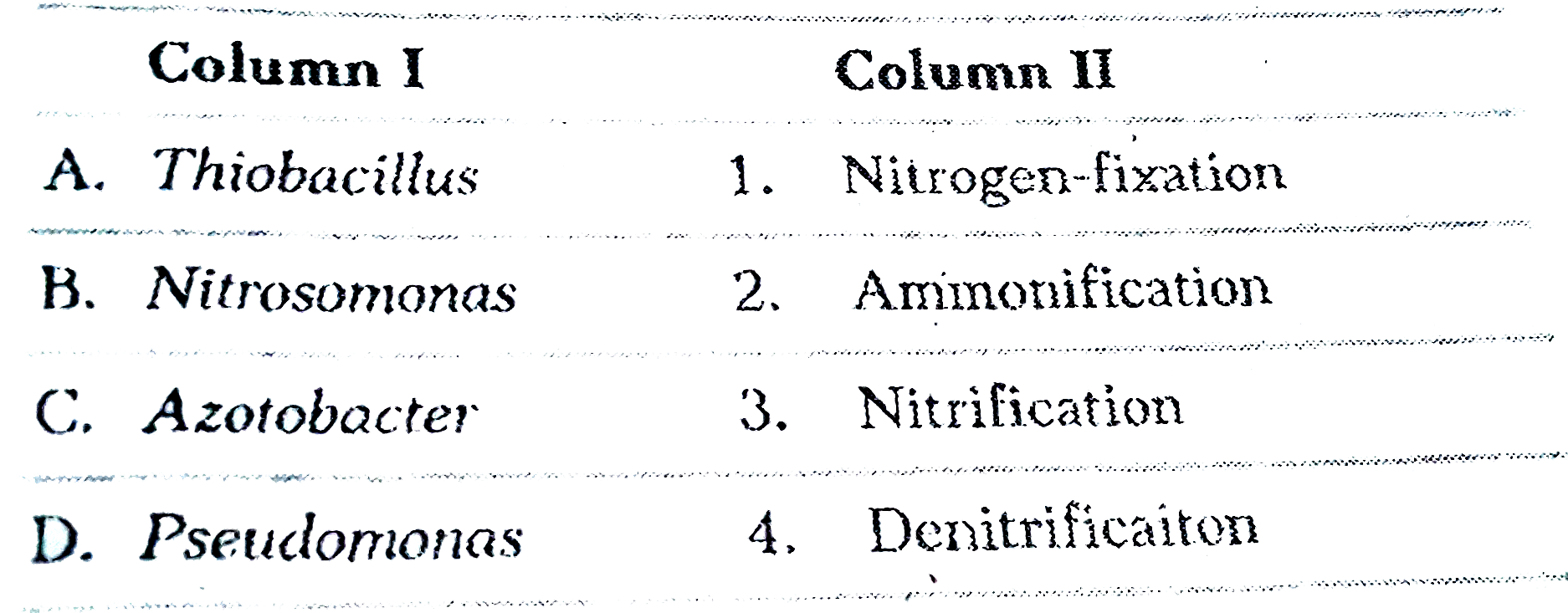Match following columns and choose the correct answer.
a.simple squamous epithelium(type of epithelium)(column I)
b.simple cuboidal epithelium (type of epithelium)(column I)
c. simple ciliated epithelium (type of epithellim)(column I)
d. simple columnar epithellium(type of epithellim)(column I) .
(i) PCT, DCT(Location of epithellium)(column II)
(ii) Air sacs of lungs (Location of epithellium)(column II)
(iii) Stomach, intestine(Location of epithelium)(column II)
(iv) Bronchioles, fallopian tube(Location of epithelium)(column II).
a(ii),b(i),c(iii),d(iv)
a(i),b(ii),c(iii),d(iv)
a(ii),b(i),c(iv),d(iii)
a(iv), b(iii), c(i), d(ii)
To solve the matching question, we will analyze each type of epithelium and its corresponding location based on the information provided.
1. Identify Simple Squamous Epithelium:
- Definition: Simple squamous epithelium consists of a single layer of flat cells.
- Location: It is primarily found in areas where passive diffusion of gases occurs, such as the air sacs of the lungs (alveoli).
- Match: This corresponds to (ii) Air sacs of lungs.
2. Identify Simple Cuboidal Epithelium:
- Definition: Simple cuboidal epithelium consists of a single layer of cube-shaped cells.
- Location: It is commonly found in glandular tissues and in the kidney tubules (specifically in the proximal convoluted tubule (PCT) and distal convoluted tubule (DCT)).
- Match: This corresponds to (i) PCT, DCT.
3. Identify Simple Ciliated Epithelium:
- Definition: Simple ciliated epithelium has cilia on its surface and is involved in movement of substances.
- Location: It is found in the lining of the bronchioles and the fallopian tubes.
- Match: This corresponds to (iv) Bronchioles, fallopian tube.
4. Identify Simple Columnar Epithelium:
- Definition: Simple columnar epithelium consists of a single layer of tall, column-like cells.
- Location: It is typically found in the lining of the stomach and intestines.
- Match: This corresponds to (iii) Stomach, intestine.
Final Matches:
- a. Simple squamous epithelium → (ii) Air sacs of lungs
- b. Simple cuboidal epithelium → (i) PCT, DCT
- c. Simple ciliated epithelium → (iv) Bronchioles, fallopian tube
- d. Simple columnar epithelium → (iii) Stomach, intestine
Correct Answer:
The correct answer is:
- a → ii
- b → i
- c → iv
- d → iii
- Definition: Simple squamous epithelium consists of a single layer of flat cells.
- Location: It is primarily found in areas where passive diffusion of gases occurs, such as the air sacs of the lungs (alveoli).
- Match: This corresponds to (ii) Air sacs of lungs.
- Definition: Simple cuboidal epithelium consists of a single layer of cube-shaped cells.
- Location: It is commonly found in glandular tissues and in the kidney tubules (specifically in the proximal convoluted tubule (PCT) and distal convoluted tubule (DCT)).
- Match: This corresponds to (i) PCT, DCT.
- Definition: Simple ciliated epithelium has cilia on its surface and is involved in movement of substances.
- Location: It is found in the lining of the bronchioles and the fallopian tubes.
- Match: This corresponds to (iv) Bronchioles, fallopian tube.
- Definition: Simple columnar epithelium consists of a single layer of tall, column-like cells.
- Location: It is typically found in the lining of the stomach and intestines.
- Match: This corresponds to (iii) Stomach, intestine.
- a. Simple squamous epithelium → (ii) Air sacs of lungs
- b. Simple cuboidal epithelium → (i) PCT, DCT
- c. Simple ciliated epithelium → (iv) Bronchioles, fallopian tube
- d. Simple columnar epithelium → (iii) Stomach, intestine
The correct answer is:
- a → ii
- b → i
- c → iv
- d → iii
Topper's Solved these Questions
Similar Questions
Knowledge Check
Match between column I and column-II and choose the correct answer ?
 AA-iv, B-iii, C-ii, D-iBA-iv, B-ii, C-i, D-iiiCA-i, B-ii, C-iii, D-ivDA-iii, B-iv, C-ii, D-i
AA-iv, B-iii, C-ii, D-iBA-iv, B-ii, C-i, D-iiiCA-i, B-ii, C-iii, D-ivDA-iii, B-iv, C-ii, D-iMatch the items in column I with column II and choose the correct answer.
 A1-C, 2-A, 3-D, 4-BB1-B, 2-C, 3-D, 4-AC1-C, 2-D, 3-A, 4-BD1-D, 2-A, 3-B, 4-C
A1-C, 2-A, 3-D, 4-BB1-B, 2-C, 3-D, 4-AC1-C, 2-D, 3-A, 4-BD1-D, 2-A, 3-B, 4-CMatch the following items in Column I with Column II and choose the correct answer :
 AA = 3, B = 4, C = 5, D = 1, E = 2BA = 5, B = 3, C = 1, D = 2, E = 4CA = 2, B = 3, C = 5, D = 1, E = 4DA = 5, B = 4, C = 3, D = 2, E = 1
AA = 3, B = 4, C = 5, D = 1, E = 2BA = 5, B = 3, C = 1, D = 2, E = 4CA = 2, B = 3, C = 5, D = 1, E = 4DA = 5, B = 4, C = 3, D = 2, E = 1
Match the type of colloidal system (column I) with its example (column II)

View SolutionMatch the type of colloid (column I) with its property (column II)

View SolutionMatch the type of colloidal system (column I) with its example (column II)

View SolutionMatch the items in Column I with those in Column II, and choose the correct answer.

View SolutionMatch the Column-I with Column-II and choose the correct answer on the basis of codes given in Column-I and Column-II

View Solution


